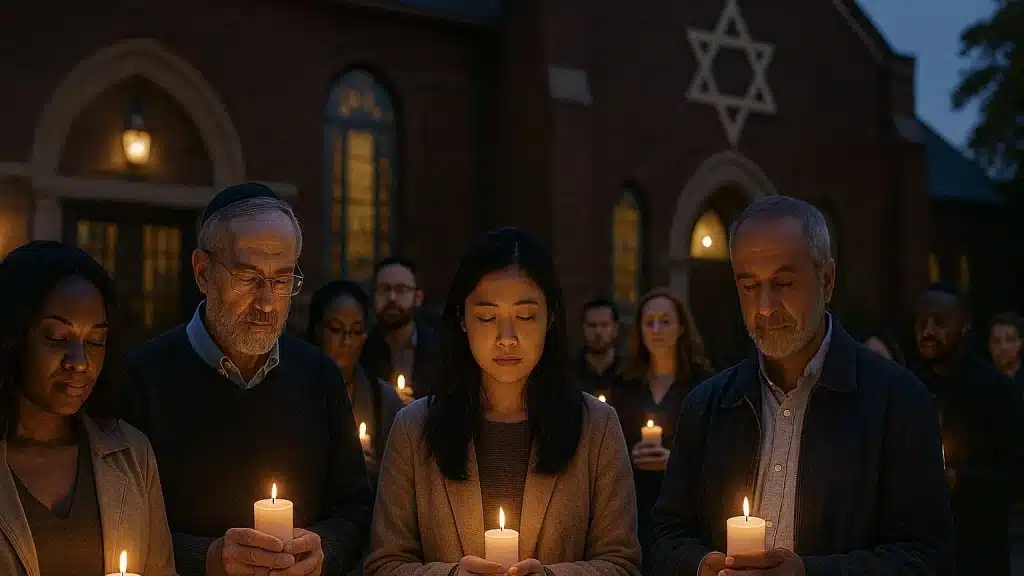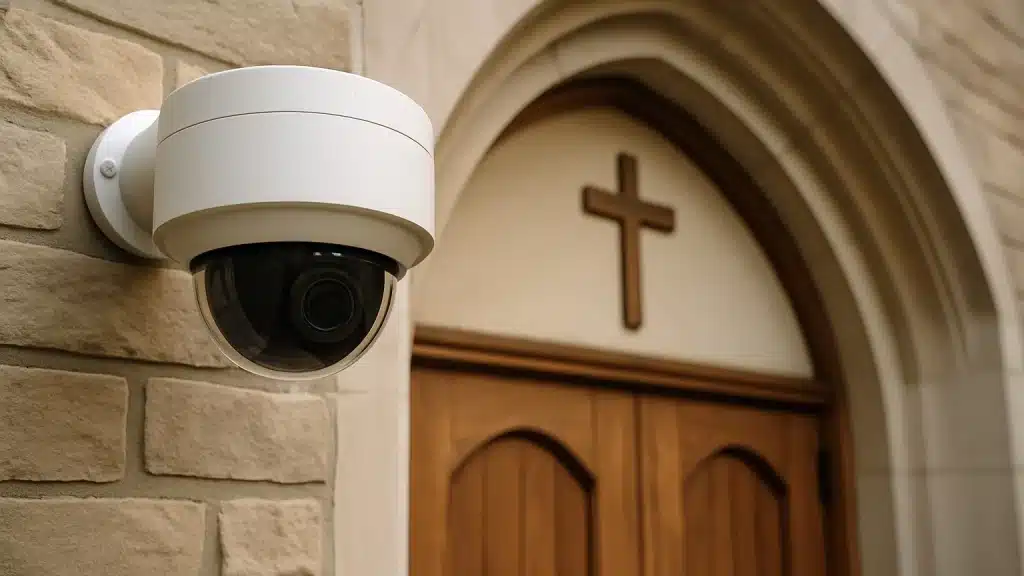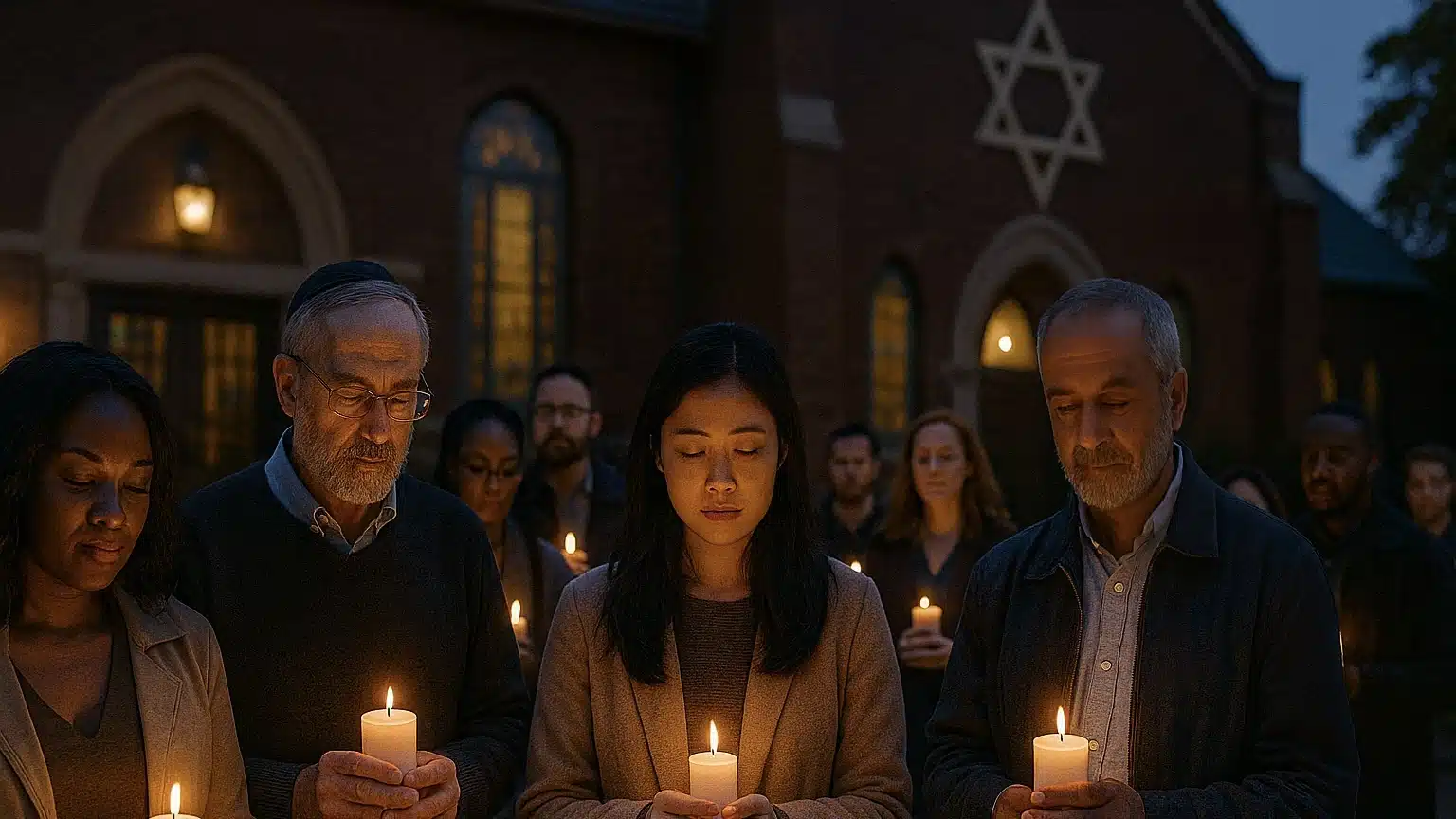While church mass shootings happen less frequently than other forms of gun violence, they do happen. Each attack sends fear throughout the congregation and religious communities across the country, and the feeling of safety in community sanctuaries is chipped away at. This article covers recent incidents, patterns, motives, and prevention strategies to help understand and stop these tragedies.
Quick Facts
- There has been an increase in church shootings in the United States over the past few decades, mostly occurring at churches, but also disproportionately impacting other faiths and houses of worship.
- Shootings at houses of worship in the US are often driven by hatred towards the religious, ethnic, or racial group that dominates the targeted congregation, or a domestic conflict between the attacker and a member of the religious institution.
- Many small churches have no security, and some rely on armed congregants for security.
A Look at Church Shootings in the 21st Century

The past few decades have seen a rise in shootings in houses of worship, predominantly in Christian churches (up to 94% of attacks), which make up the majority of religious institutions in the U.S..
According to the Violence Prevention Project, between 2000 and 2025, there were 246 shooting events at houses of worship, with 402 victims total. 307 people were killed in these shootings. These incidents ranged from disputes that escalated into violence to intentional or planned attacks and mass shootings. This article examines how different definitions for “mass shootings” can have an impact on how these attacks are counted: The strictest definition counts 10 mass shootings in the past 25 years, whereas other definitions count 40.
2023 had the most incidents of violence at houses of worship on record so far, followed by 2022 and 2019, according to the Violence Prevention Project.
There has been an increase in church shootings over the last 20 years, with some years having more or fewer shootings than others. Noticeable spikes occurred in 2006, 2012, 2019, and from 2021 to 2023.
Understanding the scope of church shootings and shootings at houses of worship is essential for developing responses.
Impacts of Shootings on Different Faiths

Christian church shootings make up the most shootings at houses of worship in the United States—but other faiths are not immune. For example, the 2012 shooting at the Sikh Temple of Wisconsin and the recent attacks against the Church of Jesus Christ of Latter-day Saints show that all faith communities are vulnerable to ideologically motivated violence.
Between 2014 and 2018, attacks on and violence in houses of worship increased by 34.8%, specifically amongst churches, synagogues, temples, and mosques. Additionally, some attacks are also motivated by racism. Attacks against those profiled to be muslim (regardless of their actual religion) increased following 9/11 with the rise in islamophobia, and predominantly Black churches have been the target of white-supremacist violence.
The victims of this violence are pastors, rabbis, imams, monks, congregants, staff, and children. Recognizing the impact gun violence has on different faiths means we need to be more inclusive in how we protect all places of worship.
Notable Shootings at Houses of Worship
Grand Blanc Township LDS Chapel (2025)
In September of this year, a lone attacker, likely motivated by anti-Mormon hatred, drove into a Church of Jesus Christ of Latter-day Saints chapel in Grand Blanc Township, Michigan, during Sunday services. He then shot into the church and set it on fire. 4 people were killed and at least 9 others were injured. The police response was quick and the shooter was neutralized before more harm was done.
Saint Stephen’s Episcopal Church (2022)
In June 2022, 3 were killed during a potluck dinner at Saint Stephen’s Episcopal Church in Vestavia Hills, Alabama. A congregant attending the event intervened and subdued the gunman. The shooter was in his 70s, making him an outlier in the age demographics of most mass shooters in the U.S..
Tree of Life Synagogue (2018)
The 2018 shooting at the Tree of Life synagogue in Pittsburgh, Pennsylvania, was one of the deadliest anti-Semitic attacks in U.S. history. The gunman opened fire, killing 11 worshippers and injuring 6 others during Saturday morning services. The incident highlighted the threat of ideologically motivated violence against minority religious communities in America.
First Baptist Church (2017)
One of the worst church shootings in U.S. history was at the First Baptist Church in Sutherland Springs, Texas, in 2017. A gunman opened fire during Sunday services, killing 26 people and injuring at least 20 others, seemingly motivated by a domestic conflict with a relative who attended the church. The shooter had a history of violence and was even court-martialled while in the Air Force for an attack on his then-wife; however, the Air Force did not properly document the conviction in the federal crime database, enabling his purchase of the weapons.
Emanuel AME Church (2015)
A 2015 mass shooting during a bible study at the historically-Black Emanuel AME (African Methodist Episcopal) Church in Charleston, South Carolina, left 9 people dead. The attacker, a self-avowed white supremacist who targeted the congregation in this hate crime, was sentenced to death. Former friends of the shooter later claimed that he had once spewed racist rhetoric while intoxicated and made vague threats. Nobody had taken him seriously—an eerie reminder that many perpetrators raise red flags before their attack, and often they are ignored.
Living Church of God (2005)
In 2005, a former church member shot and killed 7 members of the Living Church of God in Brookfield, Wisconsin, before taking his own life. The community was shocked because the attack was unexpected, coming from the quiet man they’d known, and the police struggled long to find a motive for the attack.
Patterns and Trends in Church Attacks

*Unless indicated otherwise, the data in this section is from the Violence Prevention Project Research Center’s House of Worship Homicides database, with the “Weapons Used” filter highlighting incidents with firearms, handguns, and shotguns for the 2000-2024 period.
Looking at shootings at houses of worship over the past two decades reveals some patterns. These include commonalities in the shooters’ motivations, demographics, and backgrounds, as well as trends in the time and place of shootings.
While Christian churches are the primary target of this violence in America, Jewish and Muslim houses of worship are also vulnerable, with several incidents at synagogues and mosques in recent years. They are disproportionately affected, given their lower presence in the U.S.
Knowing these patterns is key to developing effective prevention strategies and keeping all faith communities safe.
Timing and Locations
Up to 71% of all violent incidents that occurred at religious institutions from 2000 to 2024 happened outside, like in parking lots or at outdoor events. This shows that not just the inside, but also the outside of church properties must be secured. Most shootings in houses of worship happen on Sunday mornings when congregations are gathered for services. This is when religious activities are at their peak, so they are more vulnerable to attacks, like shootings.
Geographically, church shootings are most common in the South and Midwest. This is likely due to regional differences in the frequency of church gatherings, the number of religious centers, and possibly increased access to firearms. Knowing these timing and location trends helps us prepare and implement security measures during peak times and in vulnerable areas.
Motives Behind the Violence
Church shooters have many motives, but most are related to a hatred for a specific group of people (e.g., racial, ethnic, religious, etc.) or a domestic conflict with someone in the church. Ideological motives like racial hatred and anti-religious sentiment can be seen in attacks like the Emanuel AME Church shooting in 2015 and the Grand Blanc Township LDS Chapel shooting this year. It’s also become more common for perpetrators to be motivated by other shooters, glorifying and idolizing them.
Some attackers see their actions as part of a bigger ideological struggle, like a racial holy war. When personal grievances are mixed with these ideological motives, it can he harder to pinpoint one motive. In some cases, authorities can’t determine a clear motive at all. This ambiguity is why thorough investigations and a deeper understanding of what drives these violent acts are needed.
Profile of Perpetrators
Only 16% of incidents were gang-related between 2000 and 2024, according to the Violence Prevention Project.
While the affiliation of perpetrators was unknown in 70% of cases, in over 10% of shootings, they were a member of the church they attacked. In 6.9%, they were a relative of someone who was a member, like a spouse, partner, or in-law. In just over 4% of incidents, it was confirmed that the shooter had no relation or affiliation with the house of worship.
In 78% of shooting incidents where the perpetrator was identified, they were male, and in only 3% they were female. 26% of shooters were over the age of 65—this differs from the age demographics of mass shooters as a whole, with an average age of 34.4, and several attacks committed by young adults in recent years. 23% of attacks on houses of worship were carried out by this younger demographic of 18-24 year olds, 19% by 25-34 year olds, and 12% by 35-44 year olds.
Several shooters have military backgrounds, like the assailants in the 2025 Grand Blanc Township LDS chapel shooting, the 2017 First Baptist Church shooting, the 2012 Wisconsin Sikh temple shooting, and the 2008 Tennessee Valley Unitarian Universalist Church shooting.
Some shooters have had past convictions for crimes, often relating to violence. Attackers with past criminal records include:
- Lexington shooter (2025): Charges include domestic violence, robbery, theft.
- Lakewood Church shooter (2024): Charges include assault, theft, unlawful carrying of a weapon, and forgery.
- Sutherland Springs church shooter (2017): Charges include assault, aggravated assault, cruelty to animals, pointing a loaded gun at his ex-wife, and threatening her with an unloaded gun.
- Emanuel AME Church shooter (2015): Charges include trespassing and drug possession.
Despite the criminal records of these shooters, they were still able to access firearms and carry out their attacks. Knowing the profile of these attackers can help us with targeted violence interventions and support services to prevent people from committing such acts in the future.
Addressing mental health struggles early on and supporting veterans can mitigate some of the factors that lead to these tragic incidents.
Preventing Future Attacks on Houses of Worship

A study found that around 17% of protestant churches in America lack any security measures, like armed private security personnel, metal detectors, radio communication, or active shooter plans. The same study found that 54% of pastors include or rely on armed congregants for security. Security can be more difficult for smaller churches, but attacks in rural communities (which account for up to 22% of all house of worship shootings) underscore how important it is that security is prioritized.
Safety Protocols and Security for Houses of Worship

Houses of worship can be safer by:
- Conducting risk assessments
- Having clear emergency response plans
- Delegating security/response roles within the church staff and the clergy
- Offering emergency training to the congregation to ensure maximum preparedness in the face of an attack
- Upgrading house of worship security measures in and around the facility
Risk assessments can help houses of worship to identify potential threats and vulnerabilities before they are exploited. Establishing emergency response plans and training the congregation are essential steps in preparing to prevent being blindsided if an incident occurs. Hiring trained security personnel or investing in physical security measures are also effective ways to minimize violence in churches
Read our comprehensive guide on the best practices for security at houses of worship, (click here).
Learning from the past

One of the biggest lessons we’ve learned from past incidents is the importance of quick responses from law enforcement when incidents do occur. In many cases, fast action has saved lives, with some threats neutralized in minutes. That’s why it is important to have well-coordinated emergency response plans and ongoing communication between churches and local law enforcement.
Looking forward, churches should continue developing comprehensive prevention strategies that address both the security of houses of worship and the broader societal issues that contribute to these violent acts. That means promoting mental health support, responsible gun ownership, and community resilience so congregations can worship in peace and safety.
Take Action
Shootings in houses of worship, while rare, have impacted religious communities around the country. By looking at patterns, key incidents, and the impacts they have on different faiths, we can get a better understanding of these tragedies. Their complexity requires a multifaceted solution.
Prevention and response measures, including law enforcement collaboration, safety protocols for houses of worship, and community support systems, are key to protecting congregations. By learning from past incidents and embracing technology, we can keep our houses of worship safe and secure places of worship and community.
Omnilert offers a wide range of scalable security solutions for houses of worship, including mass and emergency communication systems, gun detection technology that can integrate into existing security cameras, and full-scale emergency response automation. To learn more, click here.

Frequently Asked Questions (FAQs)
How many church shootings were there between 2000 and 2025?
According to the Violence Prevention Project’s database, there were 246 shooting incidents at houses of worship, ranging from disputes that escalated into gunfire to planned mass shootings. In all of these incidents involving firearms (handguns, shotguns, and other guns), there were 402 victims, both killed and injured.
What was the deadliest church shooting in U.S. history?
The 2017 mass shooting at the First Baptist Church in Sutherland Springs, Texas, is the deadliest church shooting in U.S. history, with 26 fatalities. At least 20 others were injured as well in this attack. This shooting raised questions about background checks, as the shooter had a violent history and past criminal charges, but was still able to obtain the weapons used in the attack.
When are church shootings most likely to happen?
Church shootings often happen on Sundays because this is when congregations are gathered for services, making them a larger and more vulnerable target.
What role does technology play in church security?
Technology is the key to investigating and preventing church shootings. Physical security technology, like gun detection technology or metal detectors, may be able to identify a firearm before it’s used. After an incident takes place, surveillance technology enables efficient evidence gathering and analysis.
What are some prevention measures for church shootings?
Having clear emergency response plans, regular drills, trained security personnel, advanced security technology, and community support systems are effective measures to prevent church shootings. These not only increase safety but also build resilience in the community. To learn more about best practices for church security, click here.



